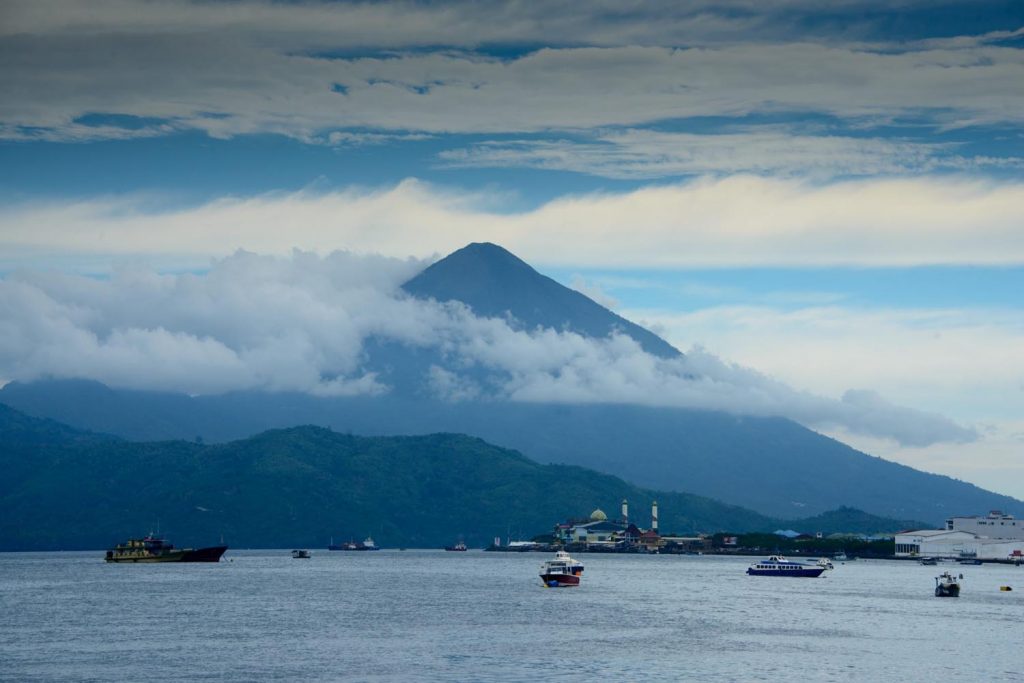Various dates available
In Search Of Wallace And His Living Treasures With Dr George Beccaloni (Ternate-Sorong)
From £7999 per person
Deposit 25%. Balance due 12 weeks before departure
From $9,800 / £7,999 per person*
*Trips are priced in the operator's local currency. The amount you pay in sterling will change with currency fluctuations.
In Search Of Wallace And His Living Treasures With Dr George Beccaloni (Ternate-Sorong)
Duration: 12 days from 04 October - 15 October 2024 & 2025
Led by the renowned guide Dr George Beccaloni, this captivating 12-day odyssey takes you through the magical Spice Islands. Sail from Ambon to Ternate and traverse the footsteps of legendary explorer Alfred Russel Wallace. Explore the region's charming colonial towns, visit ancient mosques and churches, and get to know the locals.
The Spice Islands are renowned for their rich diversity and abundance of valuable spices such as nutmeg, mace, cloves, and cinnamon. During ancient and medieval times they were a major hub for trade, attracting merchants and colonizers from various parts of the world who left their imprint on the area.

Learn how locals hard harvest spices, and turn them into goods. You will stop into many picturesque islands along your journey, including a "magic" island, look for rare wildlife in the jungle and snorkel incredible coral reefs. It is an astonishing journey with too many highlights to count.
Why You’ll Love This Trip
- Taste spices straight from the places they are harvested. Including the fruit enclosing the nutmeg seed, which is a delicacy rarely obtainable outside the Banda Islands.
- Uncover the remnants of the spice trade, visiting old plantations, fortifications, and museums that tell the tales of imperialist rivalry.
- Comb the jungles for unique species Wallace studied and discovered including the Golden Birdwing Butterfly, which Wallace called the “finest butterfly in the world”. Very few Westerners have ever seen this species alive and no groups of tourists have ever been taken to see it before.
- Navigate throughout the area's many islands, visit local communities and see cone-shaped volcanic islands rising from the sea.
- Snorkel incredible coral reefs, and see some amazing marine life including the small but jewel-like Mandarin Fish which some have called the world’s most stunning fish.
- Try wonderful local dishes including a once-in-a-lifetime opportunity to try papeda. It is the most famous and unusual of the many sago dishes in this region.
- Visit a village of the famous sea nomads, known in Eastern Indonesia as Sama-Bajau. Scattered widely through South-East Asia, sea nomads have traditionally spent their entire lives from birth to death on their small sailboats called lipa-lipa.
Who The Trip Is For
- Adventure seekers who want to visit an area of the world which few people get to see. This remote area of Indonesia is perfect for travellers who have already checked off more mainstream bucket list items like an African safari and would like to experience something truly special.
- Explorers who want to learn about the history of the area, wildlife and local traditions, while balancing planned activities with time for relaxation.
- Cruisers who want to enjoy life on board a comfortable, retrofitted pinsi boat. Our boats are traditionally made by local builders, spacious and include many modern amenities. We will take care of sailing, preparation of food and guiding your activities.
- Those who want to join a responsible travel initiative that promotes eco-friendly practices and supports local communities, contributing to the preservation of the environment and the well-being of the local people.
- Those seeking authentic cultural interactions and the chance to connect with local communities, engaging in meaningful exchanges and gaining insights into the daily lives, customs, and traditions of the people who call the Spice Islands home.
Day 1
Your flight arrives on the small island of Ternate, the capital of the North Maluku Province. You will be met at the airport and transferred to the stately Ombak Putih, moored off Ternate City. There will be time for you to get settled into your rooms, have a quick safety briefing, and enjoy an alfresco lunch while meeting the other passengers and the crew.
In the afternoon we will venture into the city, which has retained its commercial and political importance as the administrative and trading centre of North Maluku. Of the four historically powerful spice sultanates, Ternate is the only one where the sultanate has survived uninterrupted.
We will visit Fort Toluko built by the Portuguese and the ‘Kedaton’, the palace of the Sultan, with its rich collection of heirlooms. We will also see the impressive Fort Oranje built by the VOC (Dutch East India Company) and the probable site of the house where Wallace was living when he posted his essay on natural selection to Charles Darwin in 1858. After our tour we will move back to the boat ready to start our journey.
Day 2
Today we will wake up off the coast of Halmahera, just across from Ternate, with the mighty peaks of Ternate and Tidore as our dawn backdrop.
After breakfast we will head to the village of Dodinga: the very place where Wallace was living when, in a fit of malarial delirium, he discovered the mechanism which drives evolutionary change – natural selection. Once he had recovered, he promptly wrote a detailed essay explaining his theory, which he posted to Charles Darwin as soon as he returned to his base on Ternate. His essay, which was published together with Darwin’s thoughts on the subject in August 1858, prompted Darwin to publish his book Origin of Species in 1859, which explained the theory in greater detail. Dodinga is a pretty little riverside village with friendly people, colourful houses and the ruins of an old Portuguese fort, and its importance in the history of science cannot be understated.
After spending some time with the villagers, sharing some fresh coconuts and enjoying their hospitality, we will head back to the boat for lunch and then go off for an afternoon of snorkelling and relaxation.
Day 3
Today we will visit the Guarici Archipelago, a chain of islands with white sandy beaches, vibrant coral reefs and some lovely local villages. We will spend a full day here snorkelling, swimming and pay a visit to one of the villages to meet the local people.
The islands are part of a government-controlled conservation area, designed to protect the reefs and the many beautiful marine species that live there.
These protected waters also provide the perfect location for beginner or rusty snorkellers to become familiar with the water and to home their skills for the many days of snorkelling that lie ahead.
Day 4
We will wake up off the western coast of Bacan, another of Indonesia’s historic spice sultanates. We go ashore to explore the forested slopes where Wallace made some of his greatest zoological discoveries, including the Moluccan Cuscus, the Standardwing Bird of Paradise, the world’s largest bee Megachile pluto, and the huge and magnificent Golden Birdwing Butterfly. Wallace described the latter species as the “finest butterfly in the world”. When he caught the first male in 1859 he wrote: “When I took it out of my net, and opened its gorgeous wings, I was nearer fainting with delight and excitement than I have ever been in my life; my heart beat violently, and the blood rushed to my head, leaving a headache for the rest of the day.” Very few Westerners have ever seen this species alive and no groups of tourists have ever been taken to see it before. Of course, there is no guarantee we will see it – but we will try very hard and will be employing as our guide the one person on Bacan who knows exactly where it can be found.
We will also keep a close watch for these and a host of other animals, some of them endemic to these islands, including parrots, cockatoos, lorikeets, hornbills, the elusive cuscus and the endangered black macaque – the only monkey in Maluku. It’s the wrong side of the Wallace Line for monkeys; these ones were introduced hundreds of years ago from North Sulawesi.
Day 5
– In the morning we make landfall at the Pisang Islands. These tiny gems isolated in the vast waters of the Ceram Sea offer us a chance to relax and enjoy the sparkling white-sand beaches, clear waters, and vibrant reefs before making our way to the shores of West Misool.
Day 6
Today we will try our best to see the Lesser Birds of Paradise displayed in the wild, an unforgettable experience for anyone lucky enough to see them. We will rise around 4 am and have a quick breakfast and go ashore, where local guides will be waiting for us to take us through the forest to hopefully see the birds as they dance around in their ‘lekking’ (courtship display) trees. We can make no guarantees, however, as we do not have them on a leash.
We will have time for a look around the village and possibly a visit to the school and to learn about their way of life. Mid-afternoon we will set off to the eastern side of Misool to Tomolol Bay.
Day 7
This morning we will wake to see the sun rise over the picturesque chain of islands that makes up the eastern part of the Misool archipelago. The topography is typical of ‘karst dissolution’ featuring a great number of tiny islets whose bases have been eroded over time by the relentless motion of the tides.
After an early breakfast, our tenders will take us into the heart of the bay to see this partially submerged cave where it is possible to swim, snorkel or simply float while gazing up at the cavernous grotto adorned with astonishing stalactites. The more adventurous can swim or paddle through the dark waters to the other mouth of the cave.
We will then move on to a mysterious jellyfish lake and swim amongst the many thousands of stingless animals: undoubtedly one of Raja Ampat’s most memorable activities. After returning to the ship, we will use our tenders to explore more of this impressive maze of karst islands, both above and below the surface, complete with mysterious skull cairns in sea-cave cemeteries, and prehistoric cave paintings, estimated to be anything between 3,000 to 5,000 years old and depicting various human figures and huge human palms, fish, and plants, tools and vessels.
Day 8
After our days of marine exploration, the jungle-clad island of Batanta offers us a change of scenery and a chance to stretch our legs on an adventurous trek into the island’s interior. We anchor at the foot of Arefi Village, nestled on the north coast of the island, here we can visit the village and the school, and watch the children’s performance.
For those who wish, IF THE TIDE IS RIGHT we will be able to take a short walk along the riverbed brings us to the first of two jungle waterfalls complete with a refreshing pool for cooling off. The fit and adventurous may choose to continue the uphill climb along the rocks to where a second, larger cascade awaits. After this, the boat will move to Dayang Island for another great snorkelling opportunity.
Day 9
We will wake up in front of the island of Penemu, a dramatic location with a short hilltop climb to take in the amazing views. After some great snorkelling on the island’s reefs, we will set course for the tiny Arborek Island, where the local children will perform their traditional dances for us.
We can also walk around the village and gain a sense of the Asai culture, which is still kept very much alive by the villagers living in this isolated place. There’s a chance that we may get to see some manta rays as we snorkel, but there are no guarantees.
Day 10
Today will present another opportunity for keen naturalists, as we rise early and walk into the forest on a pre-dawn quest to spot the remarkable Red Bird of Paradise, one of the species that Wallace was most anxious to collect. With a little luck and the help of our knowledgeable guides, we will see this rare bird’s elaborate courtship display as dawn breaks over the forest canopy.
After returning to the ship, we will turn our attention from the sky to the sea as the Ombak Putih makes her way through the Dampier strait, home of some of Raja Ampat’s premier reefs. If the currents are in our favour, we might see some of the area’s larger specimens of marine life, which are attracted to the strait’s nutrient-rich waters.
We will spend the afternoon in Yenbeser village where Wallace spent some months and (if the tides are right) we’ll visit a faithful replica of Wallace’s small hut, which was built by the villagers using plans from FFI (Fauna & Flora International) and a grant from SeaTrek.
We will also visit a nearby small island where a local man has set up a coconut crab ‘sanctuary’. The island is home to a small number of these monsters (Birgus latro, the world’s largest terrestrial arthropod), and you can get up close and personal with these magnificent yet docile beasts. Another late afternoon snorkel along a reef with some spectacular giant clams (the world’s largest bivalve) will lead us into dinner at anchor on board, ready for an early morning venture for the Red Bird of Paradise.
Day 11
Today we will rise at 4.30am, off Saporkren village. The dinghy will carry us across to the village in the dark and a local guide will take us on a short drive into the forest on a pre-dawn quest to spot the gorgeous Wilson’s Bird of Paradise. We hope that the efforts of our early start will pay off, enabling us to catch a rare and privileged sight of the bird’s elaborate courtship dance as the day breaks over the forest canopy.
Back in the village there will be time to meet with the community and perhaps visit the school. We will be back on the boat by mid-morning and we will head to Yenbuba at Mansuar island for some snorkelling before lunch. This place known as the ‘fish bowl’ because the chance to see different types of fish around the bay. The boat will then move to Mioskon island for more snorkelling and the opportunity to watch a multitude of bats flying overhead just after sunset. Tonight we will have a farewell party.
Day 12
Today is the end of our adventure, but there is still one last chance for a swim and a snorkel at a small offshore island before we cruise into the port. Alternatively, we can explore Doom Island.
Once at anchor we will say goodbye to George, our crew and our sea-based home, the Ombak Putih before taking the tenders ashore where you will be transferred to the airport for your onward travel.
- Professional cruise directors
- Outdoor sleeping facilities
- Complimentary snorkelling equipment and two sea canoes (add SUP)
- Free tea, soft drinks, juices, coffee and mineral water
- Excellent food and snacks (vegetarian and special menus on request)
- Dining in the spacious air-conditioned lounge
- Teak wooden furniture in the lounge, cabins and on the deck
- Spacious sun and semi-covered decks
- Mooring fees
- Fuel surcharge
- Visits to restaurants, museums, galleries etc during the trip
- A fine selection of wines, beer and spirits for sale
- Travel to and from the vessel (including internal/domestic airfares)
What To Expect
While many of you are seasoned travellers, some of you may be unfamiliar with the ways and means of travelling in the remoter regions where we journey. Cruising in eastern Indonesia on a traditional wooden pinisi ship can be an exciting new world for some.
Each cruise is led by professional, multilingual tour leaders who will escort guests in all activities both on land and at sea, answer any questions, provide in-depth daily briefings, and ultimately ensure the smooth running of every aspect of the cruise.
Life On Board
Life on board our ships is one of pure enjoyment, with good food, top-class service and fine company mixed with just the right balance of exploration and relaxation. Whilst on board, guests are immersed in a world of barefoot fun and adventure, with air-conditioned private en-suite cabins, indoor and outdoor social hubs and dining areas, sun decks, a wide selection of Indonesian, Western and Asian cuisine, a full bar, and highly attentive service from our crew, whose smiles and friendly personalities offer an even greater insight into the Indonesian way of life.
Food
Our galleys are staffed with talented individuals who pride themselves on being able to conjure up all manner of dishes and delicacies from across the world, using only the best quality meat, seafood and fresh produce available – with the latter often sourced from local markets and the fishermen we meet along the way. Vegetarian dishes and most special dietary requirements can be accommodated with minimal fuss. Our stewards are on hand all day to serve meals and make sure you have all you need; from cold towels and fresh juices to a full plate of food and an iced drink whenever you need it.
While all non-alcoholic drinks are inclusive, each boat has a full cash bar stocked with local and imported wines, imported spirits and domestic beer, usually at local prices.
Accommodation
Our comfortable cabins are located below decks and offer all the necessary amenities, including double beds or twin bunks, private en-suite bathrooms, lots of natural light, individually controlled air-conditioning, ample storage space, and plenty of electrical and USB outlets.
Each boat also includes a salon, bar, sundeck and outdoor dining areas.




We Respect the Environment
We respect the environment in which we operate and are deeply committed to the integrity and preservation of the Indonesian Archipelago.
We show locals the value of protecting the species they have. For example, whale sharks are under constant threat due to the sky-high value of their fins, but thanks to our visits, local fishermen are paid a healthy fee for spotting the whale sharks and letting you in the water to be up close to them. As a result, the fishermen are very glad to protect these beautiful animals.
We also work with local NGOs on coral restoration projects in the area, and support centres like the Tasikoki Wildlife Rescue Centre which helps to rehabilitate animals back into the wild and put an end to animal trafficking.
We Support Local Communities
Our motto for these sailing adventures is “Seeing Indonesia through Indonesian eyes”. We hire locals and work with local communities to promote authentic cultural experiences and interactions between tourists and locals to foster mutual understanding and respect.
More than half of our tour guides are women. In Indonesia the workforce is extremely male-dominated, so this is a way for us to break down barriers and create a more inclusive workforce.
We partner with local NGOs working on community development projects. As well as make an effort to bring life-changing water filters, glasses, school books and LED lights to the remote villages we visit. We buy from local fishermen, and vendors and always pay the locals when they treat us to a cultural performance.
We have created a series of three books which are available for sale on our boats. The money from each book sold is entirely invested back in creating new books to distribute to communities we visit. These are just some of the ways we work to offer a responsible and equitable sailing experience.
Sultan Babullah Airport
Domine Eduard Osok Airport
Day 1
Your flight arrives on the small island of Ternate, the capital of the North Maluku Province. You will be met at the airport and transferred to the stately Ombak Putih, moored off Ternate City. There will be time for you to get settled into your rooms, have a quick safety briefing, and enjoy an alfresco lunch while meeting the other passengers and the crew.
In the afternoon we will venture into the city, which has retained its commercial and political importance as the administrative and trading centre of North Maluku. Of the four historically powerful spice sultanates, Ternate is the only one where the sultanate has survived uninterrupted.
We will visit Fort Toluko built by the Portuguese and the ‘Kedaton’, the palace of the Sultan, with its rich collection of heirlooms. We will also see the impressive Fort Oranje built by the VOC (Dutch East India Company) and the probable site of the house where Wallace was living when he posted his essay on natural selection to Charles Darwin in 1858. After our tour we will move back to the boat ready to start our journey.
Day 2
Today we will wake up off the coast of Halmahera, just across from Ternate, with the mighty peaks of Ternate and Tidore as our dawn backdrop.
After breakfast we will head to the village of Dodinga: the very place where Wallace was living when, in a fit of malarial delirium, he discovered the mechanism which drives evolutionary change – natural selection. Once he had recovered, he promptly wrote a detailed essay explaining his theory, which he posted to Charles Darwin as soon as he returned to his base on Ternate. His essay, which was published together with Darwin’s thoughts on the subject in August 1858, prompted Darwin to publish his book Origin of Species in 1859, which explained the theory in greater detail. Dodinga is a pretty little riverside village with friendly people, colourful houses and the ruins of an old Portuguese fort, and its importance in the history of science cannot be understated.
After spending some time with the villagers, sharing some fresh coconuts and enjoying their hospitality, we will head back to the boat for lunch and then go off for an afternoon of snorkelling and relaxation.
Day 3
Today we will visit the Guarici Archipelago, a chain of islands with white sandy beaches, vibrant coral reefs and some lovely local villages. We will spend a full day here snorkelling, swimming and pay a visit to one of the villages to meet the local people.
The islands are part of a government-controlled conservation area, designed to protect the reefs and the many beautiful marine species that live there.
These protected waters also provide the perfect location for beginner or rusty snorkellers to become familiar with the water and to home their skills for the many days of snorkelling that lie ahead.
Day 4
We will wake up off the western coast of Bacan, another of Indonesia’s historic spice sultanates. We go ashore to explore the forested slopes where Wallace made some of his greatest zoological discoveries, including the Moluccan Cuscus, the Standardwing Bird of Paradise, the world’s largest bee Megachile pluto, and the huge and magnificent Golden Birdwing Butterfly. Wallace described the latter species as the “finest butterfly in the world”. When he caught the first male in 1859 he wrote: “When I took it out of my net, and opened its gorgeous wings, I was nearer fainting with delight and excitement than I have ever been in my life; my heart beat violently, and the blood rushed to my head, leaving a headache for the rest of the day.” Very few Westerners have ever seen this species alive and no groups of tourists have ever been taken to see it before. Of course, there is no guarantee we will see it – but we will try very hard and will be employing as our guide the one person on Bacan who knows exactly where it can be found.
We will also keep a close watch for these and a host of other animals, some of them endemic to these islands, including parrots, cockatoos, lorikeets, hornbills, the elusive cuscus and the endangered black macaque – the only monkey in Maluku. It’s the wrong side of the Wallace Line for monkeys; these ones were introduced hundreds of years ago from North Sulawesi.
Day 5
– In the morning we make landfall at the Pisang Islands. These tiny gems isolated in the vast waters of the Ceram Sea offer us a chance to relax and enjoy the sparkling white-sand beaches, clear waters, and vibrant reefs before making our way to the shores of West Misool.
Day 6
Today we will try our best to see the Lesser Birds of Paradise displayed in the wild, an unforgettable experience for anyone lucky enough to see them. We will rise around 4 am and have a quick breakfast and go ashore, where local guides will be waiting for us to take us through the forest to hopefully see the birds as they dance around in their ‘lekking’ (courtship display) trees. We can make no guarantees, however, as we do not have them on a leash.
We will have time for a look around the village and possibly a visit to the school and to learn about their way of life. Mid-afternoon we will set off to the eastern side of Misool to Tomolol Bay.
Day 7
This morning we will wake to see the sun rise over the picturesque chain of islands that makes up the eastern part of the Misool archipelago. The topography is typical of ‘karst dissolution’ featuring a great number of tiny islets whose bases have been eroded over time by the relentless motion of the tides.
After an early breakfast, our tenders will take us into the heart of the bay to see this partially submerged cave where it is possible to swim, snorkel or simply float while gazing up at the cavernous grotto adorned with astonishing stalactites. The more adventurous can swim or paddle through the dark waters to the other mouth of the cave.
We will then move on to a mysterious jellyfish lake and swim amongst the many thousands of stingless animals: undoubtedly one of Raja Ampat’s most memorable activities. After returning to the ship, we will use our tenders to explore more of this impressive maze of karst islands, both above and below the surface, complete with mysterious skull cairns in sea-cave cemeteries, and prehistoric cave paintings, estimated to be anything between 3,000 to 5,000 years old and depicting various human figures and huge human palms, fish, and plants, tools and vessels.
Day 8
After our days of marine exploration, the jungle-clad island of Batanta offers us a change of scenery and a chance to stretch our legs on an adventurous trek into the island’s interior. We anchor at the foot of Arefi Village, nestled on the north coast of the island, here we can visit the village and the school, and watch the children’s performance.
For those who wish, IF THE TIDE IS RIGHT we will be able to take a short walk along the riverbed brings us to the first of two jungle waterfalls complete with a refreshing pool for cooling off. The fit and adventurous may choose to continue the uphill climb along the rocks to where a second, larger cascade awaits. After this, the boat will move to Dayang Island for another great snorkelling opportunity.
Day 9
We will wake up in front of the island of Penemu, a dramatic location with a short hilltop climb to take in the amazing views. After some great snorkelling on the island’s reefs, we will set course for the tiny Arborek Island, where the local children will perform their traditional dances for us.
We can also walk around the village and gain a sense of the Asai culture, which is still kept very much alive by the villagers living in this isolated place. There’s a chance that we may get to see some manta rays as we snorkel, but there are no guarantees.
Day 10
Today will present another opportunity for keen naturalists, as we rise early and walk into the forest on a pre-dawn quest to spot the remarkable Red Bird of Paradise, one of the species that Wallace was most anxious to collect. With a little luck and the help of our knowledgeable guides, we will see this rare bird’s elaborate courtship display as dawn breaks over the forest canopy.
After returning to the ship, we will turn our attention from the sky to the sea as the Ombak Putih makes her way through the Dampier strait, home of some of Raja Ampat’s premier reefs. If the currents are in our favour, we might see some of the area’s larger specimens of marine life, which are attracted to the strait’s nutrient-rich waters.
We will spend the afternoon in Yenbeser village where Wallace spent some months and (if the tides are right) we’ll visit a faithful replica of Wallace’s small hut, which was built by the villagers using plans from FFI (Fauna & Flora International) and a grant from SeaTrek.
We will also visit a nearby small island where a local man has set up a coconut crab ‘sanctuary’. The island is home to a small number of these monsters (Birgus latro, the world’s largest terrestrial arthropod), and you can get up close and personal with these magnificent yet docile beasts. Another late afternoon snorkel along a reef with some spectacular giant clams (the world’s largest bivalve) will lead us into dinner at anchor on board, ready for an early morning venture for the Red Bird of Paradise.
Day 11
Today we will rise at 4.30am, off Saporkren village. The dinghy will carry us across to the village in the dark and a local guide will take us on a short drive into the forest on a pre-dawn quest to spot the gorgeous Wilson’s Bird of Paradise. We hope that the efforts of our early start will pay off, enabling us to catch a rare and privileged sight of the bird’s elaborate courtship dance as the day breaks over the forest canopy.
Back in the village there will be time to meet with the community and perhaps visit the school. We will be back on the boat by mid-morning and we will head to Yenbuba at Mansuar island for some snorkelling before lunch. This place known as the ‘fish bowl’ because the chance to see different types of fish around the bay. The boat will then move to Mioskon island for more snorkelling and the opportunity to watch a multitude of bats flying overhead just after sunset. Tonight we will have a farewell party.
Day 12
Today is the end of our adventure, but there is still one last chance for a swim and a snorkel at a small offshore island before we cruise into the port. Alternatively, we can explore Doom Island.
Once at anchor we will say goodbye to George, our crew and our sea-based home, the Ombak Putih before taking the tenders ashore where you will be transferred to the airport for your onward travel.
Everyone tends to dress very casually, so choose clothes that are comfortable for walking/trekking and suitable for wearing on the boat.
Clothing
The tropical climate means you can safely leave all of your warm weather gear at home. Bring cool cotton t-shirts and shorts. We cruise during the dry season in each of the regions that we visit but rain is always a possibility so bring a lightweight waterproof jacket. It can sometimes be a bit windy on the boat and this will also help keep you warm. Likewise, a lightweight fleece could be useful for pre-dawn trekking or if there is a cool wind on the boat – even if you don’t need it onboard, it will be useful for the plane.
We are respectful of the local cultures and customs – bring clothes that cover your shoulders and knees for village visits. Finally, you might want to bring at least one smart-casual outfit for sunset cocktails and evening meals on the boat.
Ladies: beach throw-overs, kaftans and sarongs are always useful; choose fabrics that dry easily. Also, bring a lightweight sundress or two – the boat offers a great setting for a photo shoot, live it up!
Sun Protection
You’ll be spending plenty of time out in the scorching tropical sun, so be sure to pack sunscreen with a high enough SPF to protect your skin from the sun’s damaging rays, which are stronger in the water, and some sun-protective clothing as well.
Cover-ups, sarongs, sun shirts, and other such clothing will ensure that you come back from your trip with just happy memories and photographs – and not sunburn. A good hat is essential; a wide-brimmed hat or cap will keep the strong equatorial sun off your face and neck. Sunglasses keep your eyes protected. A strap to hold your glasses can be a good idea for more active adventures. Just in case you fail to avoid getting sunburnt, bring an aloe-based lotion to soothe burned skin.
Footwear
Pack comfortable trainers, trekking sandals, sturdy walking shoes or hiking boots for hikes and walks. Bring socks to wear inside your walking shoes to avoid getting blisters. Many travellers appreciate the added stability of a walking stick or hiking pole; lightweight telescopic poles are easy to pack. You might also want waterproof sandals or reef shoes for wet landings and water activities. Flip-flops are great for the beach but it is standard practice to go barefoot on the boat.
Bags
A day backpack is essential on day hikes to carry things such as your water bottle, camera, binoculars, and rain jacket. We will provide you with a metal water bottle, which can be refilled as often as required. A waterproof wet/dry bag is a good idea for gadgets like your phone or camera.
Swimwear
Don’t forget your swimsuit/bikini/shorts/trunks/Speedos —and preferably more than just one swimsuit, so that one or two can be drying while you are wearing another. Luckily, swimsuits and/or swim trunks don’t take up too much space in your luggage. The water is warm but a rash guard (or a wetsuit) will protect you from the sun, abrasions and stings.
Skin and Hair Protection
Ladies, it’s important that you take good care of your skin and hair. The sun, seawater and salty air may be beautiful to experience but it can be tough on your body and will wreak havoc on your locks. Bring moisturising lotion to soothe skin parched by the sun and the saltwater; bring a leave-in conditioner to detangle your hair with ease because the water, mask, and hair ties will leave it in knots. Also consider bringing a scarf or headband to hold back unruly hair, or hair ties/pins to keep your hair off your face and therefore prevent water seeping into your mask.
Note: Your cabin is outfitted with towels, shampoo, conditioner and body wash.
Camera Equipment
If you are a photo enthusiast bring all of the camera and video equipment that you will use as you can expect exceptional opportunities for photography. If you prefer the ease of a point & shoot, bring that. If you want to take underwater photos you might want to invest in a waterproof camera or waterproof housing to capture photos of the incredible marine life.
It’s a good idea to bring a spare memory card; our cruises explore remote regions where memory cards cannot be purchased.
Electronics
The voltage on board is 220 volts. There are several electric sockets and USB charging ports in each cabin suitable for European-type plugs, but we do have a selection of adaptors for non-European-type plugs. Additional sockets are located in the saloon, where we have a dedicated area for the charging of electronic devices and cameras.
Miscellaneous Items
Snorkels, masks & fins in all sizes are provided onboard. If you are an avid snorkeller, you may prefer to bring your own mask & snorkel. If you’re new to snorkelling, you might want to consider purchasing a full-face snorkel mask to bring with you, it’s an easier option for beginners.
Even if you think that your stomach is rock-solid, a squall could turn up and make you feel sick. Sea-sickness tablets are provided on board but you may have a preferred brand, in which case bring your own.
You’ll find reference books and paperback novels on board. However, books of your choice or an e-reader will come in handy for down hours.
There is a comprehensive wilderness first aid kit on board but remember to bring any personal medications.
Essential items should be packed in your carry-on luggage. Medications, corrective lenses, spare underwear, cameras and documents should not be checked in case your bag does not arrive with you.

















